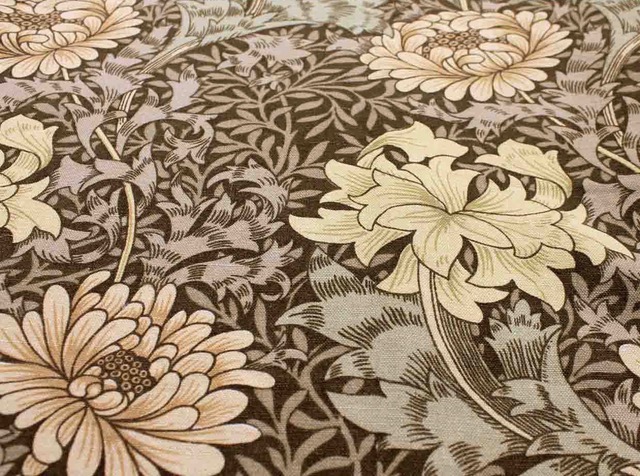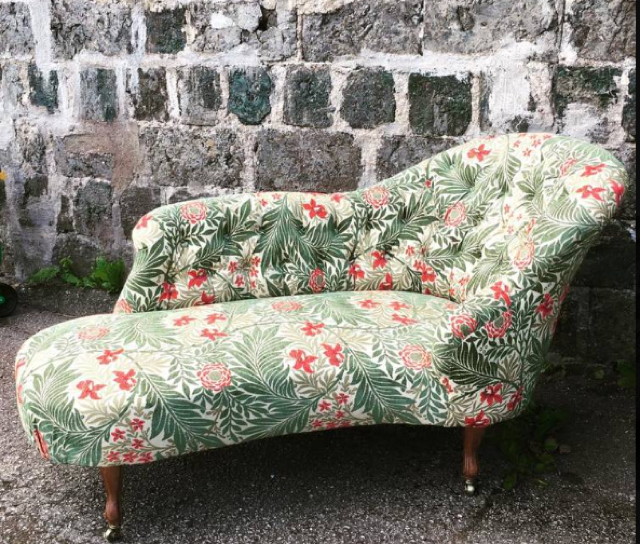
Meet Petter Eklund. Petter is Sweden’s only member of The William Morris Society.
Dear Reader,
My name is Petter Eklund. I’m the proud member 7432 of The William Morris Society which I joined quite recently. I’m living and working as a freelance writer in Stockholm, Sweden and I am, right now, the only Swedish member of the society. Becoming a member, I started to order quite a few of the society’s wonderful small books of The Kelmscott lectures. They seem to come directly from some wunderkammer in the Kelmscott underground. I wanted more.
My letters to The Society led to this unexpected and honourable task; writing on the society’s homepage. So I will try to be your sometimes correspondent, reporting whenever I find something Morrisy here in this northern outpost. Actually, apart from the usual flow of Morris wallpapers, tea mugs, napkins and textiles, there’s not many signs of the old master M in the Swedish every day.
Last night I happened to see the Willow Bough pattern on a wall in a publishing house, but that’s how you meet him mostly, as a decoration, a ”we know that you know what it’s all about” sign; a ”quality mark”, that I’m afraid is too easily bought.
I’m not sure how deep Morris really does run in the Swedish cultural fabric today, if at all? Nobody talks about him. He is never seen in the media. I indulge myself quite alone. Telling a few friends living here, but born and raised in England, about my Morris fever, I just get some huff’s and ha’s and warnings that I might be engulfed. Well, in that case, I’m drowning happily.
So, here I am drifting, letter like, in this introductory text. I can always comfort myself with the thought that Mr Morris himself had a liking for ”rustic” people living in outposts on Iceland, so maybe he would have accepted this Scandinavian doodling.
So, how did I come across William Morris, in a countryside childhood north of the university town of Uppsala? My parents left the city to live in a village. My mother was an illustrator (childrens’ books) and my father some kind of interior designer, with a keen interest in old things and furniture. I wanted glass tables, TVs, water closets, but got stuck in a semi ruin with ice-cold corners and open fires, a bit like Narnia. Luckily we had electricity and a military look hi-fi set. Overhead was the more or less constant roar of jet planes, especially on Tuesday nights. This was in the 60’s and 70’s when the Cold War was raging and Sweden tried to hold up a neutral front between NATO and USSR.

Here is where Morris entered my life, in the form of a canapé all draped in the Chrysanthemum pattern. My parents told me about the ”fine Morris textiles” as I looked up from my Airfix models and accepted this Morris-phenomenon. It stuck with me through the years. I wish I could ask them now, how they found him, maybe at their duffel-jazz-art school in the Fifties, and what he meant to them. Was it all about style and status?
So, I grew up embedded in Led Zeppelin and Morris pale green Chrysanthemum flowers. Guitar hero Jimmy Page, David Bowie and Bryan Ferry also played their part in making Morris cool (more of this in my next blog) For me, this William Morris-character who my parents told me was important in some way, became interwoven with everything modern, jet planes and Apollo-capsules, and therefore also a bit daring. He came naturally with my pop stars. And that’s where I would like to place him now, at the very front of the ongoing struggle of ideologies, tastes and styles within today’s culture.
Morris’ world can be a wonderful escapist oasis but also something more direct and usable as a guide in life. ”What would Morris think of this?” you can ask yourself, faced with dreary products, fakes and ethical dilemmas. Morris is here today if you like him to be, in more ways than on your living room wall. He can still be cutting edge. William Morris was at the same time dreamy and radical, utopian, concrete, drastic and enthusiastic, working as hard as he could for ”an art for all”. Couldn’t we do the same in our own small ways? That’s where we must be heading; with ”art” being just one aspect of our means to save the planet’s future. But what happened to the old and cozy Chrysanthemum canapé? It got lost somewhere. Strange how important things in your life just can disappear, but that’s another story.
Member 7432 signing off, until next time.





